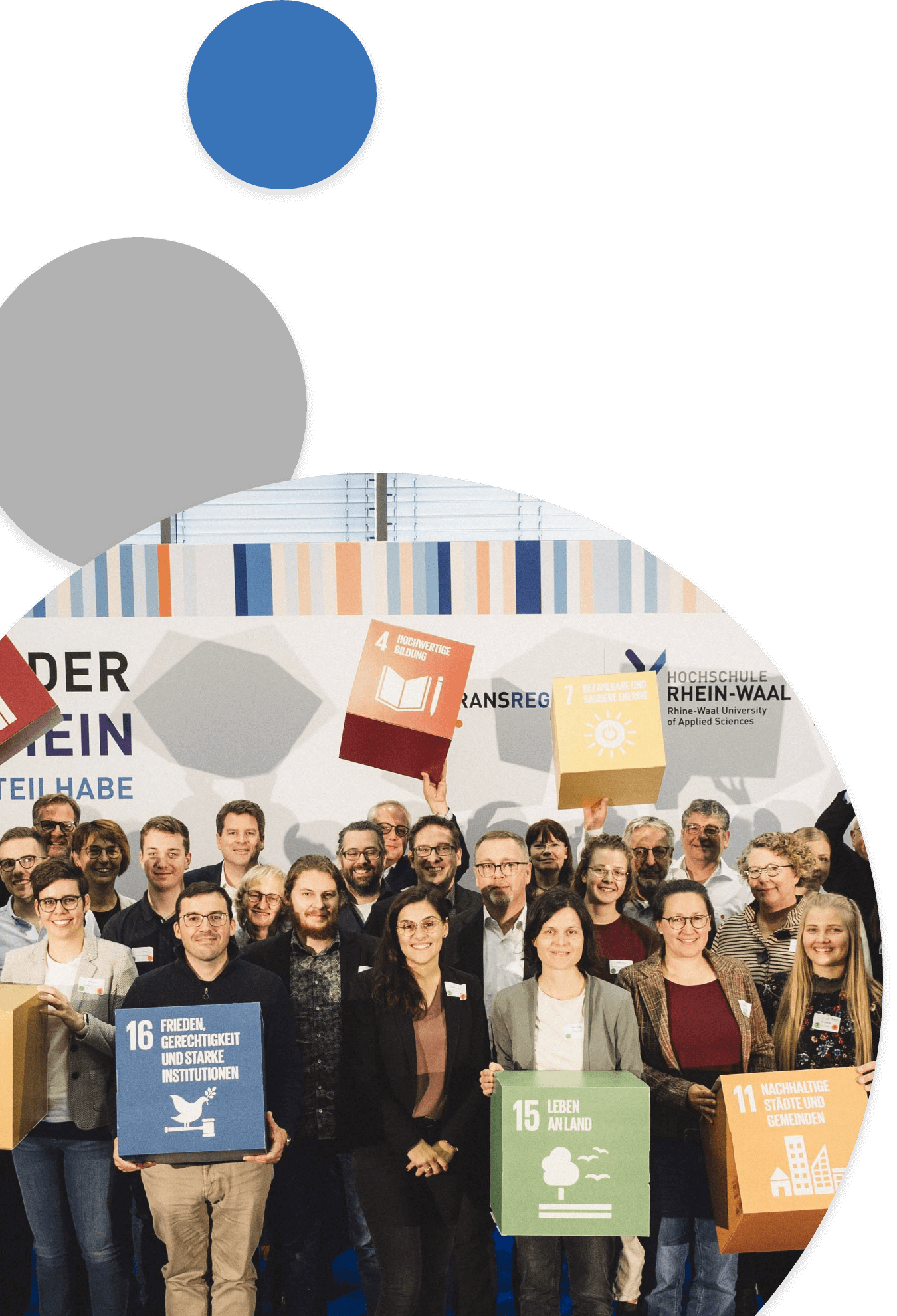Accessibility
Declaration on accessibility at Rhine-Waal University of Applied Sciences
According to Directive (EU) 2016/2102 of the European Parliament and of the Council, public bodies are obliged to make their websites and mobile applications accessible. For public authorities and public bodies in the state of North Rhine-Westphalia, the directive was implemented in the North Rhine-Westphalia Disability Equality Act (BGG NRW) (§ 10 to § 10e) and in the North Rhine-Westphalia Barrier-free Information Technology Ordinance (BITV NRW).
Scope of this declaration
Rhine-Waal University of Applied Sciences endeavours to make its website accessible in accordance with the BITV NRW and the BGG NRW.
This declaration on accessibility applies to: www.transform-hsrw.org
Status of compatibility with the requirements for accessible information technology
This website is partially barrier-free. The requirements of the BITV Barrier-free Information Technology Ordinance 2.0 are partially fulfilled.
We are currently working on improving the accessibility of the site. However, we ask for your patience as the site is currently undergoing a relaunch process.
Non-accessible content
The following requirements of EN 301 549 are currently not always met for websites at https://transform-hsrw.org/:
- 9.1.1 Alternative texts for control elements: Alternative texts for graphic links are sometimes missing. Elimination planned by mid-2025 at the latest.
- 9.1.1.1 Alternative texts for graphics and objects: Alternative texts for informative font graphics are missing in some cases. Elimination planned by mid-2025 at the latest.
- 9.1.2.1 Alternative texts for video and audio elements: Alternative texts for video elements are missing. Elimination planned by mid-2025 at the latest.
- 9.1.3.4 HTML structural elements for lists: Menus are not labelled with suitable HTML structural elements. Elimination planned by mid-2025 at the latest.
- 9.1.3.5 Labelling of form elements can be determined programmatically: Not all form fields are labelled appropriately. Elimination planned by mid-2025 at the latest.
- 9.1.3.6 Input fields for user data convey the purpose: Not always given. Elimination planned by mid-2025 at the latest.
- 9.1.4.1 Use of colours: Colours are sometimes used as the only visual means of conveying information, indicating an action, eliciting a response or identifying a visual element. Elimination planned by mid-2025 at the latest.
- 9.1.4.3 Text contrast is sufficient: Text contrast is not always sufficient. Elimination planned by mid-2025 at the latest.
- 9.1.4.4 Change text size: With the exception of captions and text illustrations, the size of text cannot be changed by up to 200 per cent in some cases without using tools and without losing content or functionality. Elimination planned by mid-2025 at the latest.
- 9.1.4.5 No font graphics: Font graphics are used in some cases. Cannot always be avoided due to uploaded advertising material, but can only be improved with alternative texts.
- 9.1.4.8 Visual presentation: "For the visual presentation of text blocks, there is a mechanism to achieve the following: Foreground and background colours can be selected by the user, the width is no more than 80 characters or glyphs (40 for CJK), the text is not justified (both left and right margins), the line spacing (leading) is at least one and a half spaces within paragraphs, and the paragraph spacing is at least 1.5 times the line spacing, the text can be resized up to 200 percent without tools, without the user having to scroll horizontally to read a line of text in a full-screen window." - Is not yet given. Elimination planned by mid-2025 at the latest.
- 9.1.4.11 Contrast of graphics and graphic control elements sufficient: Not always sufficient. Elimination planned by mid-2025 at the latest.
- 9.1.4.12 Text spacing: Content implemented with markup languages that support the following text style properties will sometimes lose content or functionality if one of the following settings is made and no other style property is changed:
- Line height (line spacing) to at least 1.5 times the font size;
- Spacing after paragraphs to at least 2 times the font size;
- letter spacing (spacing) to at least 0.12 times the font size;
- Word spacing at least 0.16 times the font size.
- 9.1.4.13 Content on hover or focus: The web page contains elements with a hover effect that appear when the mouse pointer is positioned and disappear again when the mouse pointer is removed. Elimination planned by mid-2025 at the latest.
- 9.2.1.1 Usable without a mouse: Most of the essential content and functions are accessible in Firefox and Chrome, but cannot be used in some cases due to a lack of recognisability. Expected to be rectified as part of the upgrade (April 2024).
- 9.2.2.1 Customisable time limits: Page content is displayed without a time limit. In some cases, forwarding takes place with a time delay. In some cases, forwarding takes place with a time delay.
- 9.2.5.3 Visible labelling part of the accessible name: Labelling text does not always appear in the same form in the accessible name. Wird voraussichtlich im Rahmen der Aufrüstung (April 2024) behoben werden.
- 9.3.3.2 Labelling of form elements available: Not always present. Expected to be rectified as part of the upgrade (April 2024).
If you require accessible content that is not yet accessible, please contact us at transform@hochschule-rhein-waal.de. We will endeavour to find a solution as soon as possible.
Date of creation
This declaration was created on 05/03/2024.
Contact and feedback option
Have you noticed any shortcomings in the accessibility of content on www.transform-hsrw.org? Then you are welcome to contact us. Please send your comments, suggestions and questions about accessibility to transform@hochschule-rhein-waal.de.
Arbitration centre
If you have not received a satisfactory response to messages or enquiries regarding the accessibility of the www.transform-hsrw.org website sent to the above contact, you can contact the Ombudsman's Office for Accessible Information Technology. The ombudsman's office has the task of supporting out-of-court dispute resolution in the event of conflicts between people with disabilities and public bodies on the subject of accessibility. The arbitration procedure is free of charge. No legal assistance is required.
The ombudsman's office is assigned to the representative for the interests of people with disabilities in accordance with Section 11 of the North Rhine-Westphalia Disability Equality Act and can be reached via the following contact:
Send an e-mail to the ombudsman's office for accessible information technology NRW
By telephone: (0211) 855-3451.



